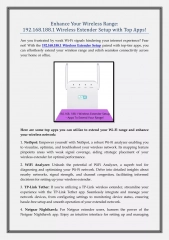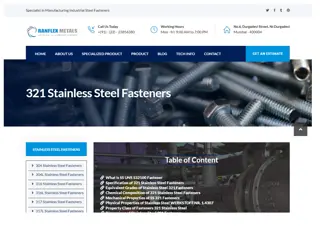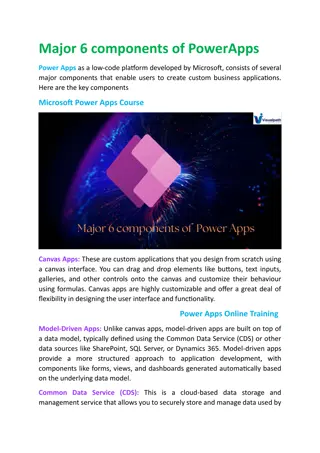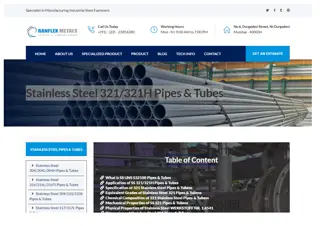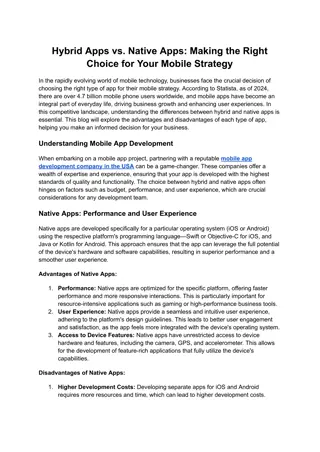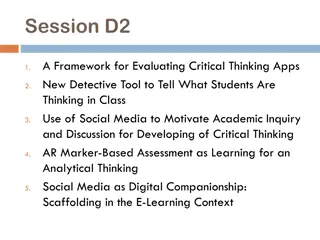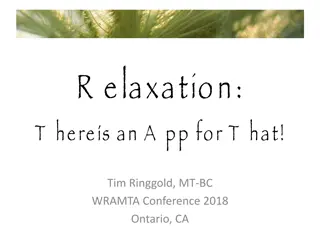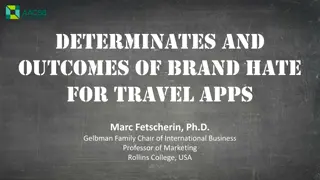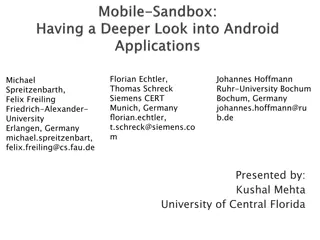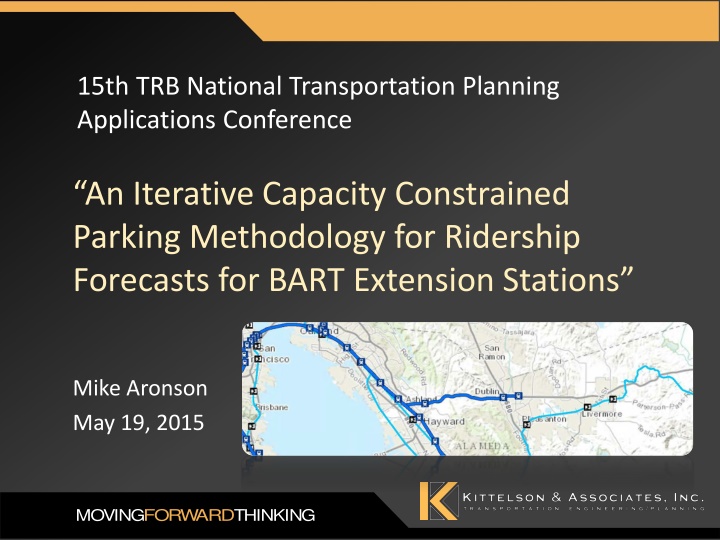
Capacity-Constrained Parking Methodology for BART Extension Stations Presentation
Explore an iterative approach for parking forecasts at BART extension stations, detailing available modeling tools, encountered problems, and a disclaimer regarding the retrofit process. The presentation covers BART to Livermore extension, modeling tools, alternatives, and more.
Download Presentation

Please find below an Image/Link to download the presentation.
The content on the website is provided AS IS for your information and personal use only. It may not be sold, licensed, or shared on other websites without obtaining consent from the author. If you encounter any issues during the download, it is possible that the publisher has removed the file from their server.
You are allowed to download the files provided on this website for personal or commercial use, subject to the condition that they are used lawfully. All files are the property of their respective owners.
The content on the website is provided AS IS for your information and personal use only. It may not be sold, licensed, or shared on other websites without obtaining consent from the author.
E N D
Presentation Transcript
15th TRB National Transportation Planning Applications Conference An Iterative Capacity Constrained Parking Methodology for Ridership Forecasts for BART Extension Stations Mike Aronson May 19, 2015 MOVING FORW ARD THINKING
Presentation Overview 1. BART Livermore extension 2. Available modeling tools 3. Problems encountered 4. Parking constraint approach 5. Next time! MOVING FORW ARD THINKING 2
Disclaimer Incremental retrofit to address key issues Fit schedule and budget constraints This is not a recommended start-to-finish approach However, components could be applied to other studies MOVING FORW ARD THINKING 3
1. BART to Livermore Extension MOVING FORW ARD THINKING
Bay Area Rail Transit BART Livermore ACE Commuter Rail Extension BART SF Airport MOVING FORW ARD THINKING 5
BART to Livermore Alternatives San Jose Freeway Alignments Downtown Alignments MOVING FORW ARD THINKING 6
2. Available Modeling Tools MOVING FORW ARD THINKING
Several tools available for BART forecasts Metropolitan Transportation Commission This work done prior to significant improvements Conversion to activity-based model Detailed transit network Excluded ridership markets outside Bay Area Less local detail Alameda County Travel Model Replicated older MTC trip-based model Additional nested logit mode choice options Includes adjacent county MOVING FORW ARD THINKING 8
Alameda County Travel Model San Joaquin County Santa Rosa Vacaville MTC Model Area Stockton San Francisco Livermore Alameda County San Jose MOVING FORW ARD THINKING 9
Model Road Network MOVING FORW ARD THINKING 10
Model Transit Network MOVING FORW ARD THINKING 11
3. Problems Encountered MOVING FORW ARD THINKING
BART Extension Ridership Issues Build vs. No Build Minimal increase Unrealistic station parking demands Transit assignment All or nothing park-and-ride Auto assignment No park-and-ride vehicles included MOVING FORW ARD THINKING 13
Minimal Ridership Increase In model, new stations did not provide significant PNR travel time benefit compared to existing stations Existing Station MOVING FORW ARD THINKING 14
Excess Park-and-Ride Demand Standard model used fixed park-and-ride access time 2 to 8 minutes based on existing calibration Best path transit park-and-ride calculations assign all demand from San Joaquin County to same station Parking demand >10,000 for maximum 4,500 spaces Manual adjustments to parking access time only moved problem from one station to another MOVING FORW ARD THINKING 15
4. Parking Constraint Approach MOVING FORW ARD THINKING
Iterative Transit Parking Approach Dynamic parking access times Time between vehicle at station and passenger on platform Increase based on demand Mode Choice Equilibrate to parking access time Dynamic park-and-ride assignment 10 increments reacting to parking access times Divert remaining excess parking demand Shift trips back to auto mode for assignment MOVING FORW ARD THINKING 17
Dynamic Parking Access Times Delay rather than absolute parking constraint On-street, private lots 2 minute minimum Add one minute for each 1,000 demand over 2,000 Example: Demand of 8,500 = 8.5 minutes access time MOVING FORW ARD THINKING 18
Mode Choice Equilibration Rerun transit paths, mode choice, transit assignment Adjust parking access times before each iteration Method of Successive Averaging (MSA) for parking access times to dampen oscillations MOVING FORW ARD THINKING 19
Incremental Park-and-Ride Assignment Split peak period demand into 10 time slices After each time slice, recalculate parking demand and parking access times Input to next time slice Example: San Joaquin demand from east split among several stations (green and orange) Automated in Voyager Write PNR file MOVING FORW ARD THINKING 20
Account for all auto trips Retrofit model to convert transit park-and-ride access trips to assignable vehicle trips Certain stations would have absolute parking constraints Excess parking demand converted to vehicle trips from origin to ultimate destination Added to vehicle trip assignment Accounting for all auto trips made a difference in VMT comparison of alternatives MOVING FORW ARD THINKING 21
5. Next Time! MOVING FORW ARD THINKING
What we would do differently next time Improve dynamic parking access time calculation Collect data on parking time vs. demand Customize curve for each station area Integrate mode choice equilibration and incremental parking assignment in same run Test multi-path transit assignment Still may need equilibration MOVING FORW ARD THINKING 23
Acknowledgments Client: BART Prime Consultant: CDM Smith Bill Hurrell, Project Manager Key Staff Completed as Dowling Associates prior to merger with KAI Neelita Mopati, model programming Antonios Garefalakis (now DKS Associates), model runs Damian Stefanakis, Project Principal MOVING FORW ARD THINKING 24


